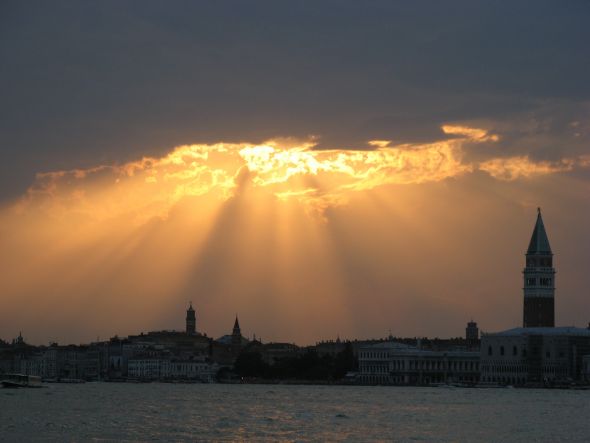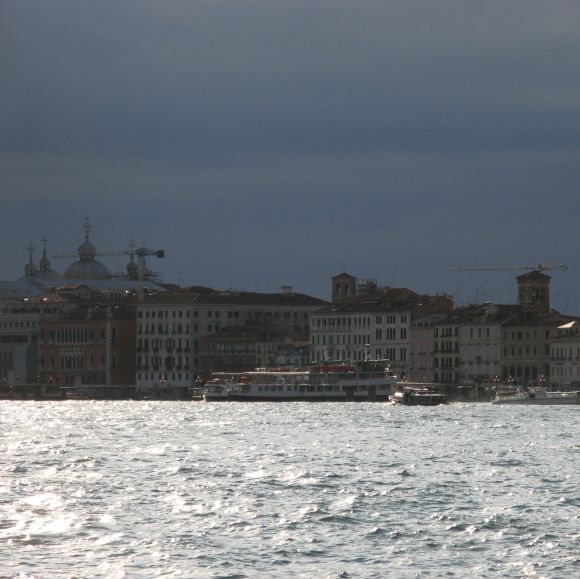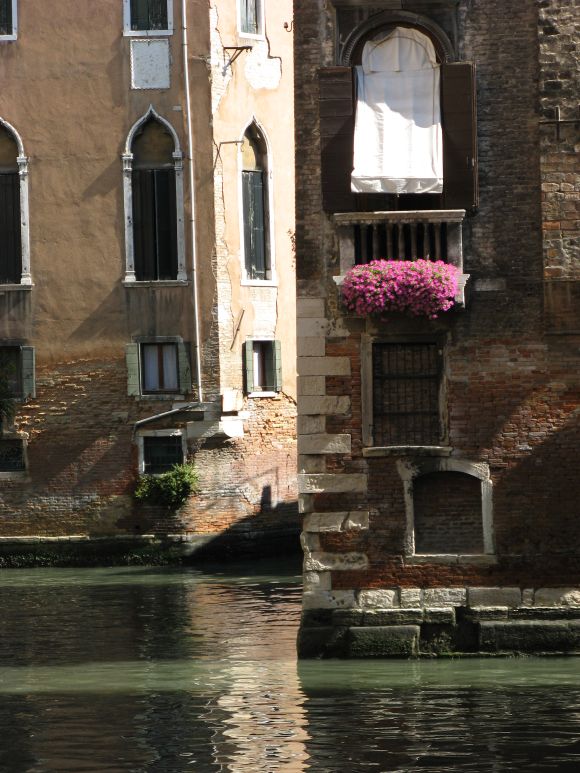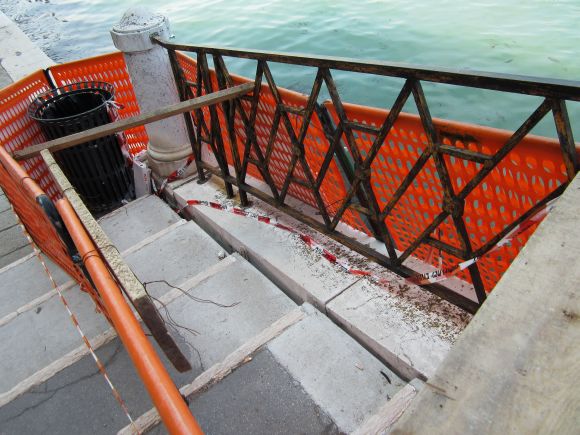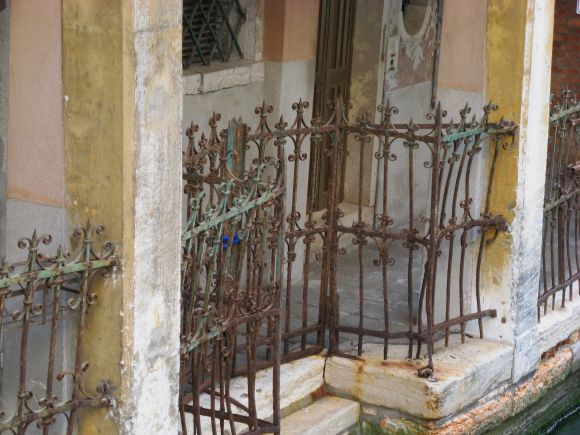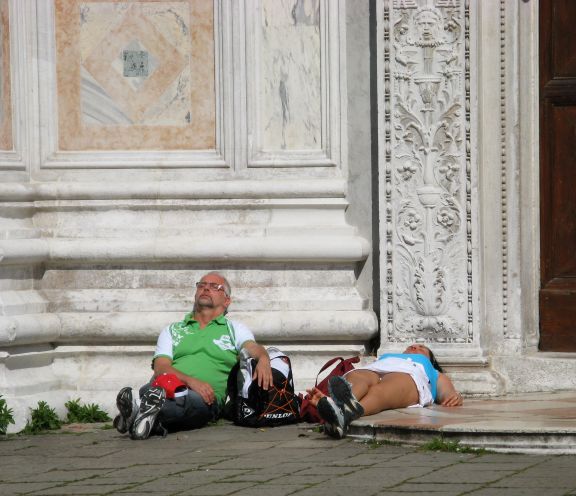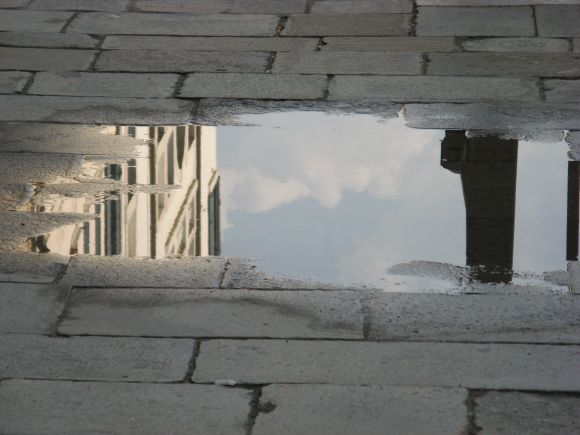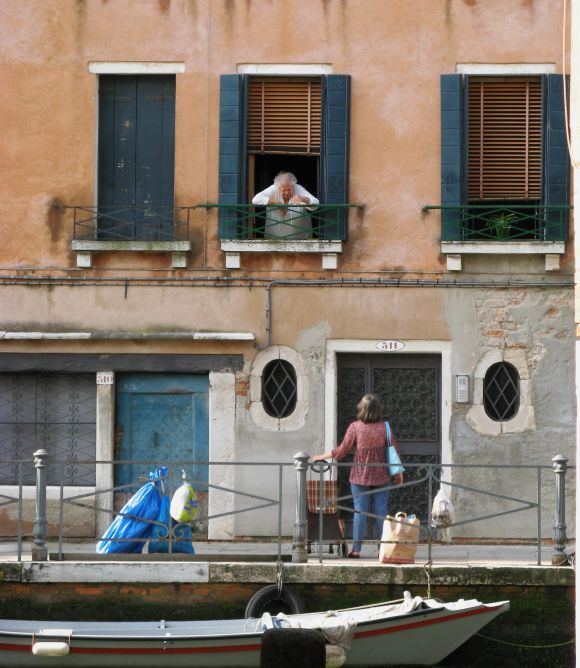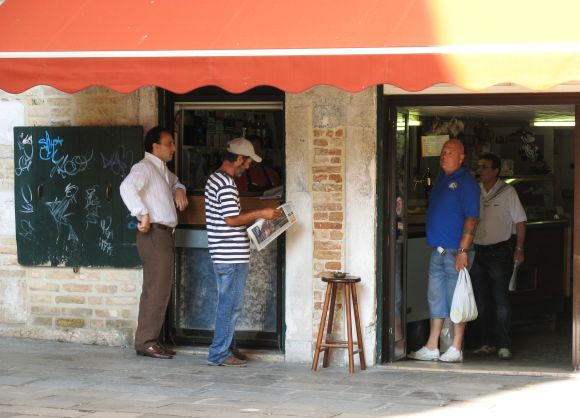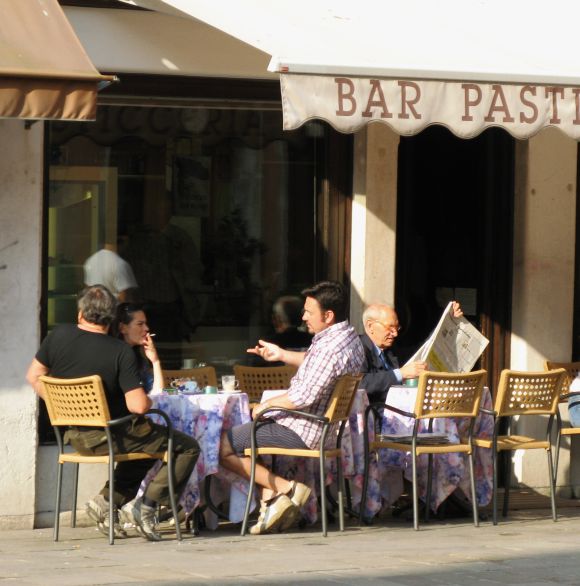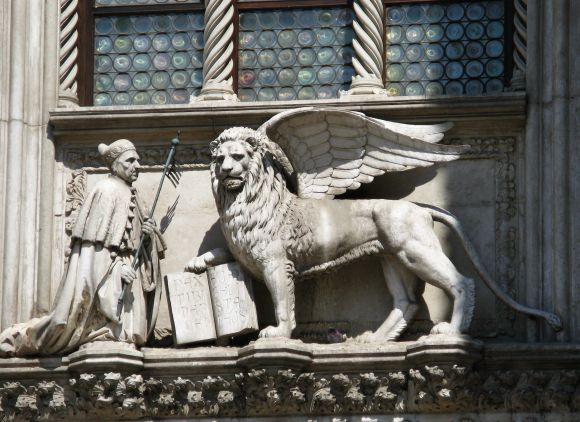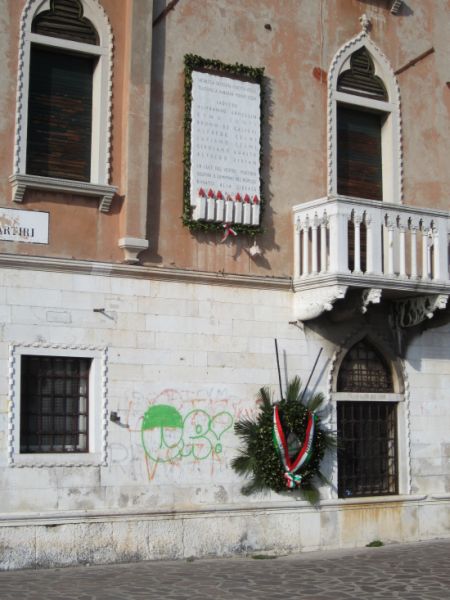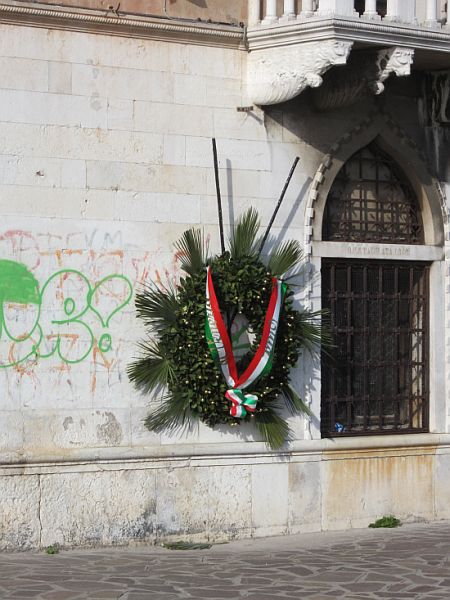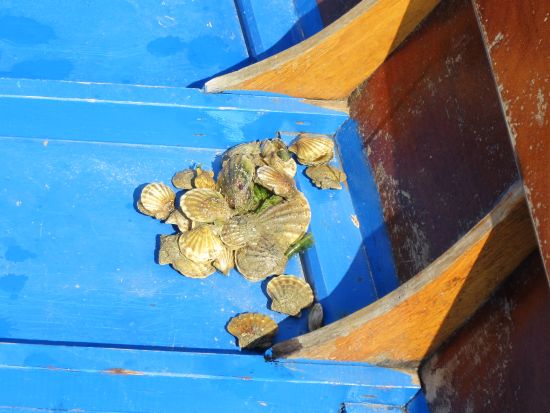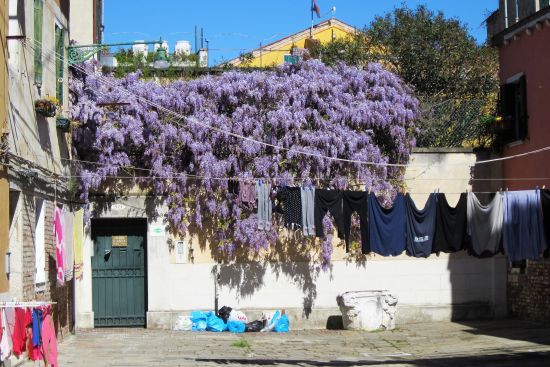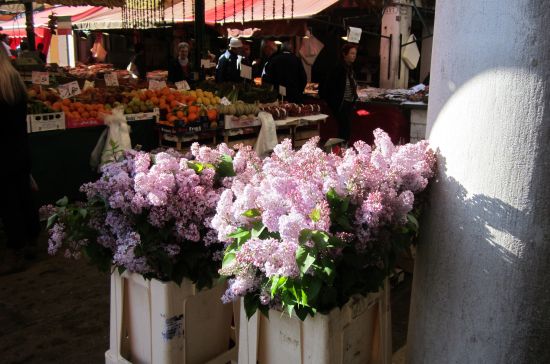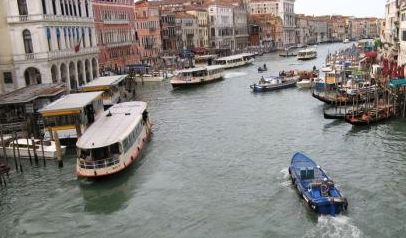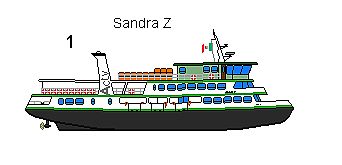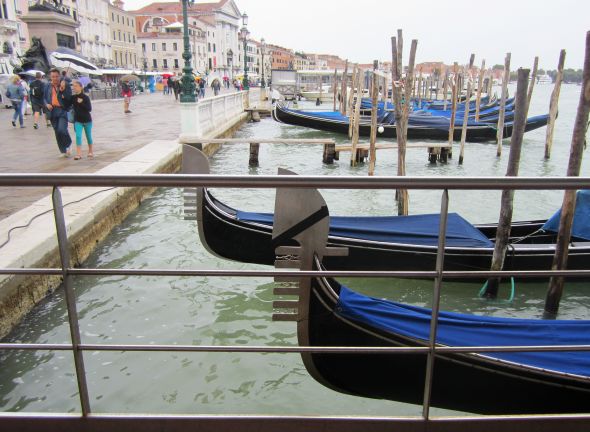
I’ve waited a few days before reporting on the latest news in the hope that some rational element would emerge from the wreckage of an appalling event. The event’s ugliness is only compounded by the context of chaos which everyone has come to take for granted, but which now is revealed as indefensible, idiotic, criminal.
As I mentioned recently, “imminent” is the only danger that gets attention. Last Saturday, the danger flashed from “imminent” to “actual” for Joachim Reinhardt Vogel, a professor from Munich on vacation with his family.
Perhaps you have already heard: The family’s gondola ride ended in his death.
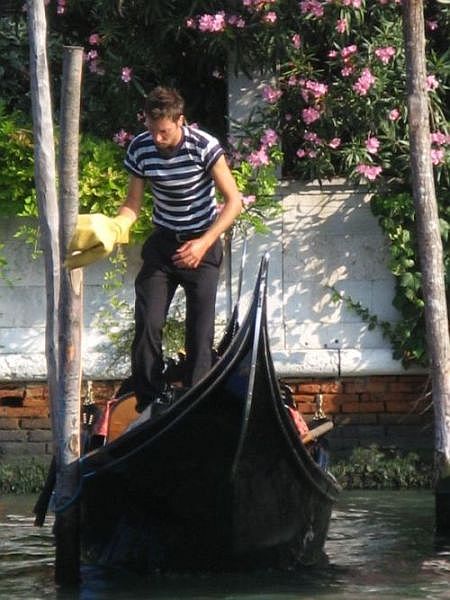
The general outline is still somewhat blurred by missing or conflicting details of the dynamics of the catastrophe. Here is what I can tell you:
At about 11:30 AM on Saturday, August 17, Professor Vogel was in a gondola with his wife and three small children. They were approaching the Rialto Bridge on the downstream side, an area which is not only the narrowest part of the Grand Canal, but by now is fearfully crowded with vaporettos, taxis, barges, and assorted other boats, all of which clog the limited space in a manner worthy of downtown Naples.
The gondola was behind a vaporetto which was not very manageable because it was going very slowly. The driver made a brusque maneuver and rammed (going backwards, blindly) the gondola.
The professor, according to his wife, had just finished saying, “With this many boats and at their speed, I wouldn’t dream of driving a boat here.” Then the impact. One report referred to the gondola as having been “harpooned.”
The professor threw himself between the vaporetto and the gondola to shield his three-year-old daughter, and his chest was essentially crushed.
The force of the collision pitched the young gondolier onto the nearby dock of the Magistrato alle Acque, his oar broken. Gondoliers on the fondamenta rushed to help; bystanders were yelling at the vaporetto driver to stop as he continued upstream, oblivious, dragging the splintered gondola behind him.
The little girl was rushed to the hospital with a deep wound on her face which may require reconstruction. The father was taken to the morgue.
That afternoon the gondoliers all stopped work for the rest of the day as a sign of respect. The next day many of them put a strip of black tape on their gondola’s ferro, symbol of mourning, and organized a simple ceremony of commemoration. The gondoliers’ association will pay for the funeral and the costs of repatriation.
But now that I think about it, why was it them and not the ACTV to show so much sorrow and solidarity, not to mention offer to defray expenses? Oh wait — the ACTV ordered the little flags on the stern of each boat to fly at half mast. That’s touching.
The young gondolier is in shock — not clinical, but certainly emotional. The driver of the vaporetto has been charged with manslaughter.
Gondolas occasionally capsize — not often — for various reasons, but the last fatality was an American woman, in 1992. In that case, a vaporetto was also involved.
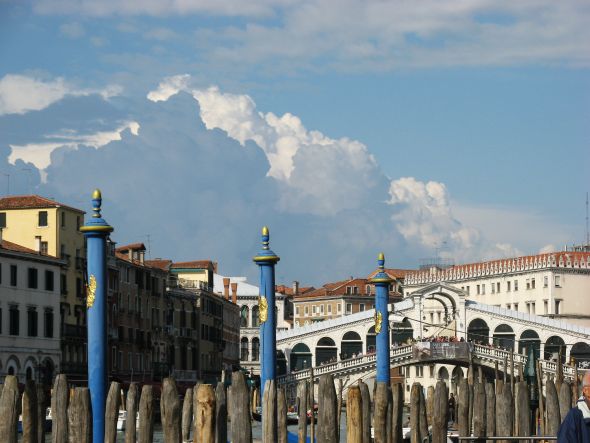
The context which makes this so terrible — as if it needed context to be terrible — is that traffic has been rapidly increasing for years. More vaporettos? Got to have them. More taxis? Sure, let’s add them too (25 more licenses have just been approved by the city). Let’s add more of everything! The municipal police has estimated that as many as 4,000 boats per day pass in the Grand Canal. We’re surprised that something happened?
Now there are meetings of the gondoliers, of the city government, of everyone except you and me. What to do? How to do it?
The motto of the city, at least until now, could well have been “Everything’s fine until it isn’t.” Certainly there has been the traditional outpouring of mutual blame from every political corner, everyone singing some version of “I told you so” and “We knew this would happen” and “I’ve been warning about this for years but nobody listens.”
As the head of the gondoliers’ association stated, all the regulations necessary for orderly traffic already exist. What we need is for them to be enforced. I could have said that myself. So could everybody, including the people involved.
But if everybody knows that the regulations exist, and that lack of enforcement renders the waterways dangerous, the logical conclusion would be either to insist on enforcement (a moment of humorous fancy: Taxi drivers and barge drivers and vaporetto drivers massed in front of City Hall, with pitchforks and torches, bellowing “We demand that you make us obey the laws! We refuse to work until you compel us to obey the laws!” Humorous moment over.) or for each person to regulate himself, otherwise known as obeying the law, thereby obviating the need for enforcement.
So simple, so easy, so cheap. That must be why it doesn’t work.
